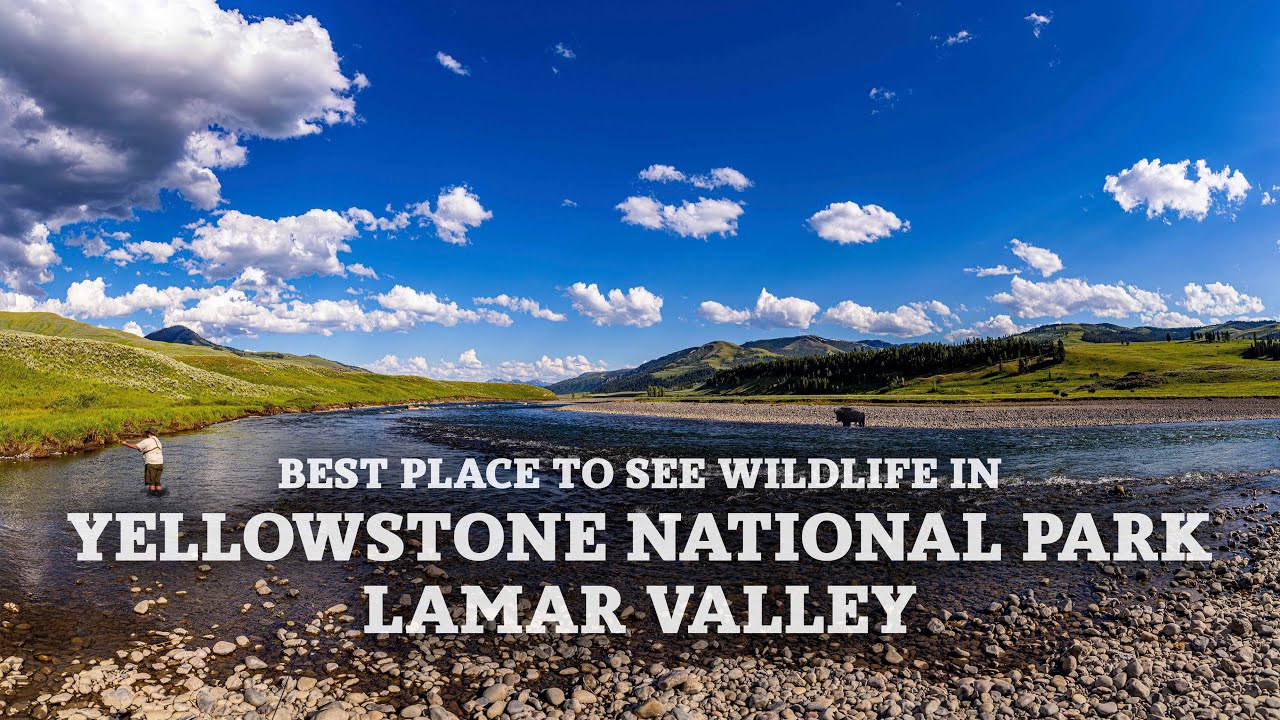Introduction
Welcome to the wild side of Yellowstone National Park! If you’re an adventurous spirit, craving to witness nature’s marvels up close, you’re in for a treat. Yellowstone isn’t just any ordinary park; it’s a living, breathing ecosystem where wildlife thrives. In this article, we’ll embark on a journey through the seven best places to see wildlife in Yellowstone. Get ready to be amazed!
Lamar Valley: The Serengeti of Yellowstone
Prepare to be awestruck as you enter the Lamar Valley, often referred to as the “Serengeti of Yellowstone.” Here, amidst sweeping grasslands and meandering rivers, you’ll encounter an abundance of wildlife. Keep your eyes peeled for the majestic bison herds, elusive wolves, and graceful pronghorns. The Lamar Valley offers unparalleled opportunities for wildlife enthusiasts and photographers alike.
Hayden Valley: Where Bison Roam Free
Head over to Hayden Valley for a glimpse into the untamed wilderness of Yellowstone. This vast valley is a hotspot for bison sightings, with herds leisurely grazing against the backdrop of the scenic Yellowstone River. Be sure to have your camera ready to capture these iconic symbols of the American West in their natural habitat.
Grand Canyon of the Yellowstone: Raptors Soar High
Venture into the awe-inspiring Grand Canyon of the Yellowstone, where towering waterfalls cascade into the depths below. As you marvel at the geological wonders, don’t forget to look to the skies. This canyon is a haven for raptors, including bald eagles and ospreys, who gracefully soar above the rugged cliffs. Witnessing these majestic birds in flight is a sight to behold.
Yellowstone Lake: Aquatic Treasures
Embark on a journey to Yellowstone Lake, the largest high-elevation lake in North America. While the crystal-clear waters of the lake are mesmerizing, it’s what lies beneath the surface that truly captivates. Dive into the world of aquatic wonders, where cutthroat trout and elusive otters thrive. Take a scenic boat tour or cast a line for a chance to glimpse these underwater marvels.
Mount Washburn: Birdwatcher’s Paradise
Hike to the summit of Mount Washburn for a bird’s-eye view of Yellowstone’s diverse avian population. This iconic peak offers panoramic vistas of the surrounding landscape, making it an ideal spot for birdwatching. Keep an eye out for colorful songbirds, elusive raptors, and the occasional pika darting among the rocks. With its sweeping vistas and abundant birdlife, Mount Washburn is a paradise for nature lovers.
Mammoth Hot Springs: Where Wildlife Meets Geothermal Wonders
Explore the surreal landscape of Mammoth Hot Springs, where geothermal features intertwine with wildlife habitats. As you wander along the boardwalks, you’ll encounter elk grazing amidst steaming terraces and prismatic pools. Keep a safe distance and admire these magnificent creatures against the backdrop of the otherworldly thermal formations.
Tower Fall: Wildlife in the Heart of the Wilderness
Journey to Tower Fall, where the untamed beauty of Yellowstone is on full display. Marvel at the majestic waterfall cascading into the rocky canyon below, and keep an eye out for wildlife sightings along the way. From black bears to bighorn sheep, Tower Fall offers a glimpse into the diverse array of species that call Yellowstone home.
Conclusion
Yellowstone National Park is a treasure trove of wildlife wonders, where every corner reveals a new adventure. Whether you’re exploring the sweeping valleys or marveling at the geothermal features, the park never fails to impress. So pack your bags, grab your camera, and embark on an unforgettable journey into the heart of nature’s playground.
FAQs:
Q1: Is it safe to encounter wildlife in Yellowstone? A1: While Yellowstone is home to a diverse range of wildlife, it’s essential to maintain a safe distance and respect their natural habitat. Always follow park guidelines and never approach or feed wild animals.
Q2: When is the best time to visit Yellowstone for wildlife viewing? A2: The best time for wildlife viewing in Yellowstone is during the spring and fall seasons when animals are more active. Additionally, early mornings and late evenings offer optimal viewing opportunities.
Q3: Can I spot wolves in Yellowstone? A3: Yes, Yellowstone is one of the few places in the United States where you can observe wolves in their natural habitat. The Lamar Valley and Hayden Valley are prime locations for wolf sightings.
Q4: Are there guided wildlife tours available in Yellowstone? A4: Yes, Yellowstone offers a variety of guided wildlife tours led by knowledgeable park rangers and experienced naturalists. These tours provide valuable insights into the park’s ecosystem and increase your chances of spotting wildlife.
Q5: What should I do if I encounter a bear in Yellowstone? A5: If you encounter a bear in Yellowstone, remain calm and slowly back away while making yourself appear larger. Never run or approach the bear, and always carry bear spray as a precautionary measure.
